Sony Xperia X vs Samsung Galaxy S7
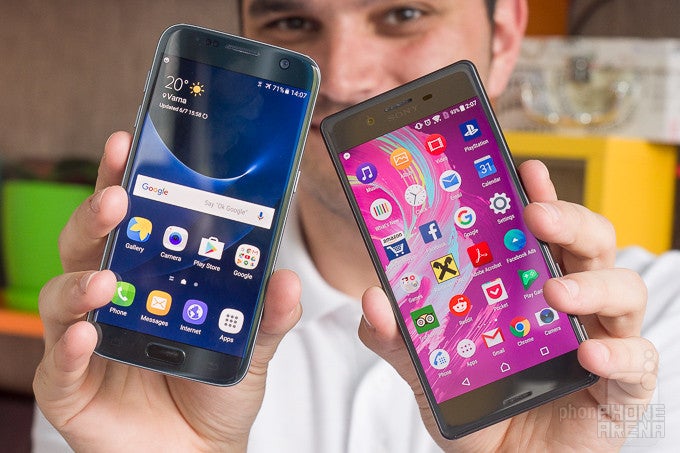
Introduction
Sony is on an aggressive timeline: it’s releasing new phones every 6 months or so, but this time it’s different.
The Sony Xperia X is one of three new X series smartphones and the change from the Sony Xperia Z naming communicates that there is something more than just a slight bump in specs here. Indeed, there is: the Xperia X brings a reformulated design, a new camera sensor and a few other important changes.
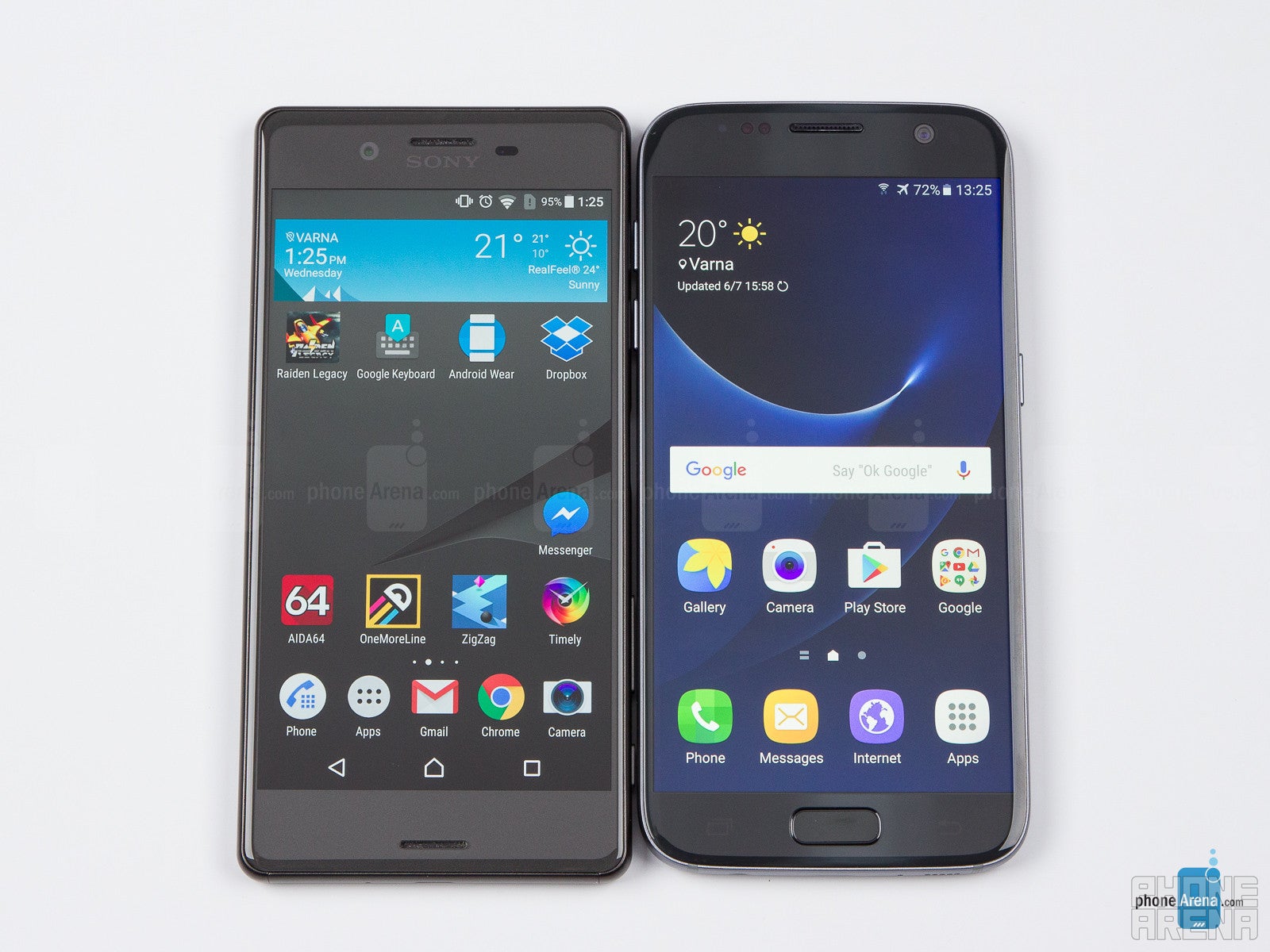
Design
Both have a stylish and beautiful design with no obvious flaws: the tapered back on the S7 makes it a slightly better in-hand fit, plus it has water-protection. Also, button placement on the Xperia X is terrible.
Sony has long been known for its excellent, stand-out designs: the Sony brand name itself is a synonym for high quality and elegance for many. However, the company’s last flagships from the Xperia Z series had very sharp edges and were a bit on the thick side.
Luckily, Sony went to the drawing board with the Xperia X: it’s not a radical re-design, but it addresses some of the nuisances of the Xperia Z5 design. It features beautifully smooth glass on the front, a stylish and durable metal back with the Xperia brand name etched, and all of that in a phone with no sharp edges that fits well in the hand. With no annoying visible antenna lines and all finished in one, unified color theme - from the back to the side and the front - the Xperia X is a true gem of modern smartphone design, balanced in every way.
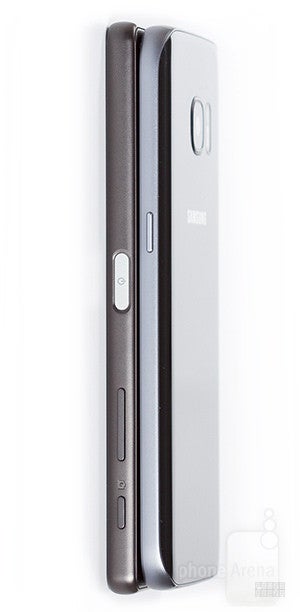
Then we have the buttons, so let’s start with the elephant in the room: the terrible button placement on the Xperia X. We don’t know who at Sony thought it was a good idea to put the volume rocker towards the bottom end of the side, but this awkward position makes it quite the annoying stretch to reach out for the volume keys. While the buttons on the Xperia X are a bit mushy (especially the lock key), the Galaxy S7 has very clicky and easy to press buttons. It shows attention to detail and that’s important. Speaking of buttons, one minor nuisance is that the Galaxy S7 home key on the front gets signs of wear and tear, even after about just a week of use. For all else, the S7 has a great design, with slight curves and tapered edges for great in-hand feel.
It’s also worth saying that the Xperia X and Galaxy S7 are very similar in size and weight.
Surprisingly, the Xperia X lacks one important feature – a fingerprint scanner. Sony has confirmed that the Xperia X won’t have fingerprint security in its U.S. version, while the international version is said to actually feature a fingerprint reader on the lock key on the side. The Galaxy S7 has a quick and accurate fingerprint scanner embedded in its home button up front. Naturally, the S7 is also a step ahead in the mobile payments game with Samsung Pay that work via the fingerprint scanner of the phone.
Then, there is waterproofing: the Galaxy S7 can take a short plunge in water and survive it, and that’s a great thing to have, while the Xperia X lacks such protection.
Display
The Xperia X has a 5” Full HD display with oversaturated colors and bluish whites, while the Galaxy S7 offers a 5.1” Quad HD screen that looks very good in Basic mode.

Here’s the deal with displays: we’ve reached a point where most devices these days have sufficient sharpness and the main difference in display quality comes from the way they show colors. Needless to say, both the Xperia X with its 5” LCD screen with a resolution of 1080 x 1920 pixels and the Galaxy S7 with its 5.1” Super AMOLED display with a resolution of 1440 x 2560 pixels meet that sharpness criteria. The extra pixels in the Galaxy S7 make a difference only if you use the phone for virtual reality, or when you stare at it from very up close.
Both are also very bright screens that are easy to read outdoors even on a sunny day.
When it comes to the way the two deal with colors, though, there are some important differences. The Xperia X comes with colors that are overblown and lean towards the colder side. Sony allows you to select two other modes (go to Settings > Display > under Quality, tap on Image Enhancement) that seem to boost color even further and add contrast to images, but that does not make colors accurate, quite the opposite. You also have the option to manually tweak red, green and blue channels (go to Settings > Display > under Quality, tap on White Balance), which may come in useful. We recognize the fact that Sony has achieved high brightness and it’s worth pointing out how well finished and laminated the screen is, so that it appears nearly flush with the cover glass, but color reproduction is disappointing.
As to the Galaxy S7, its default Adaptive mode provides similarly inaccurate colors, but Samsung provides the useful Basic screen mode (go into Settings > Display > Display Mode, and change it there), that makes all the colors on the phone appear very well balanced to the sRGB mode. We recommend using this mode. It has the slight downside of whites appearing just a bit on the green side, but for all else, it gives a very well-balanced look to colors.
The Galaxy S7 also has the neat Always-on Display feature that shows you the time plus notifications, while the Xperia X lacks such extras.
Interface
Sony’s custom Android skin is light, unobtrusive and fast. Samsung’s TouchWiz, on its part, offers better customization options.
Samsung’s custom TouchWiz user interface is probably the most recognizable face of the Android platform, despite the fact that it looks so different from stock Android. Then, there is Sony’s radically different approach: its custom Android interface that is on the Xperia X is light, very similar to the pure, stock look of Google’s platform.
And that’s a good thing: animations are quick and to-the-point, the few custom additions like the clock give the phone some character, but overall the approach Sony takes is ‘if it ain’t broke, don’t try to fix it’. Some options like 'double tap to wake' are not enabled by default, so you'll have to go on a trip to settings to turn them on if you want (go to Settings > Display > scroll all the way down to the Interaction section and tap on the Tap to wake up setting).
These being Android phones, you have very rich customization, but Samsung’s Galaxy S7 sure has the longer list of options.
Internet and Connectivity
The good thing about phones from mainstream brands like Sony and Samsung, especially for their U.S.-bound phones, is that they are supplied with proper 4G LTE bands, so in the case with the Xperia X and Galaxy S7, you needn’t worry about band compatibility with the major US carriers.
The web experience on the Xperia X is good: pages load fairly quickly and we did not notice much of a lag in our daily usage, but the Galaxy S7 still feels a bit zippier in everything it does on the web.
Naturally, both phones have dual-channel Wi-Fi support, as well as Bluetooth 4.2 and NFC connectivity.
Performance and Memory
The Xperia X with Snapdragon 650 performs well for daily tasks, but is definitely not on par with the Snapdragon 820 on the S7 in more intense operations.
The Sony Xperia X rocks the Snapdragon 650 system chip with 3GB of RAM, which is clearly not the best on the market in terms of performance. The Snapdragon 650 chip is decent for daily tasks, but if you put it through its paces with gaming and image-heavy websites, you will notice it takes longer to render pages and some games might load longer and stutter.
The Samsung Galaxy S7, on the other hand, is equipped with the cream of the crop Snapdragon 820 SoC and 4 gigs of RAM. It is the faster of the two with those more intensive tasks, while for daily routines, the difference between the two chips is barely noticeable.
Technically, geeks would be interested to know that the Snapdragon 650 on the Xperia X is manufactured on the rather dated 28nm process, while the Snapdragon 820 on the Galaxy S7 is made using the much more power efficient 14nm manufacturing process, an advantage for the S7.
Good news is that both phones come with 32GB of storage on board, and both support microSD card expansion. The storage on the Galaxy S7 is a bit faster, which speeds up app installs, but also contributes to faster loading of apps.
Camera
The Xperia X has a decent, but not great 23MP camera: the interface needs some extra polish and image quality is not on par with the Galaxy S7. Shockingly, it lacks 4K video recording option.

The Galaxy S7 has one of the best cameras on a phone ever, so the challenge that the Xperia X faces here is immense.
First, let’s talk specs. On the Xperia X, we have a 23-megapixel, 1/2.3-inch sensor and a 24mm lens on top of it. That’s quite shocking: this is a much wider lens than on most smartphones (usually phone makers use 27mm-30mm lenses) and this might be a problem as such a wide angle might prove to be not as versatile. Up front, there is a 13MP camera for selfies. The Samsung Galaxy S7, on its part, comes equipped with a 12-megapixel sensor on the back with the impressive Dual Pixel tech that makes it the fastest-focusing phone ever. Up front, there is a 5MP selfie shooter.
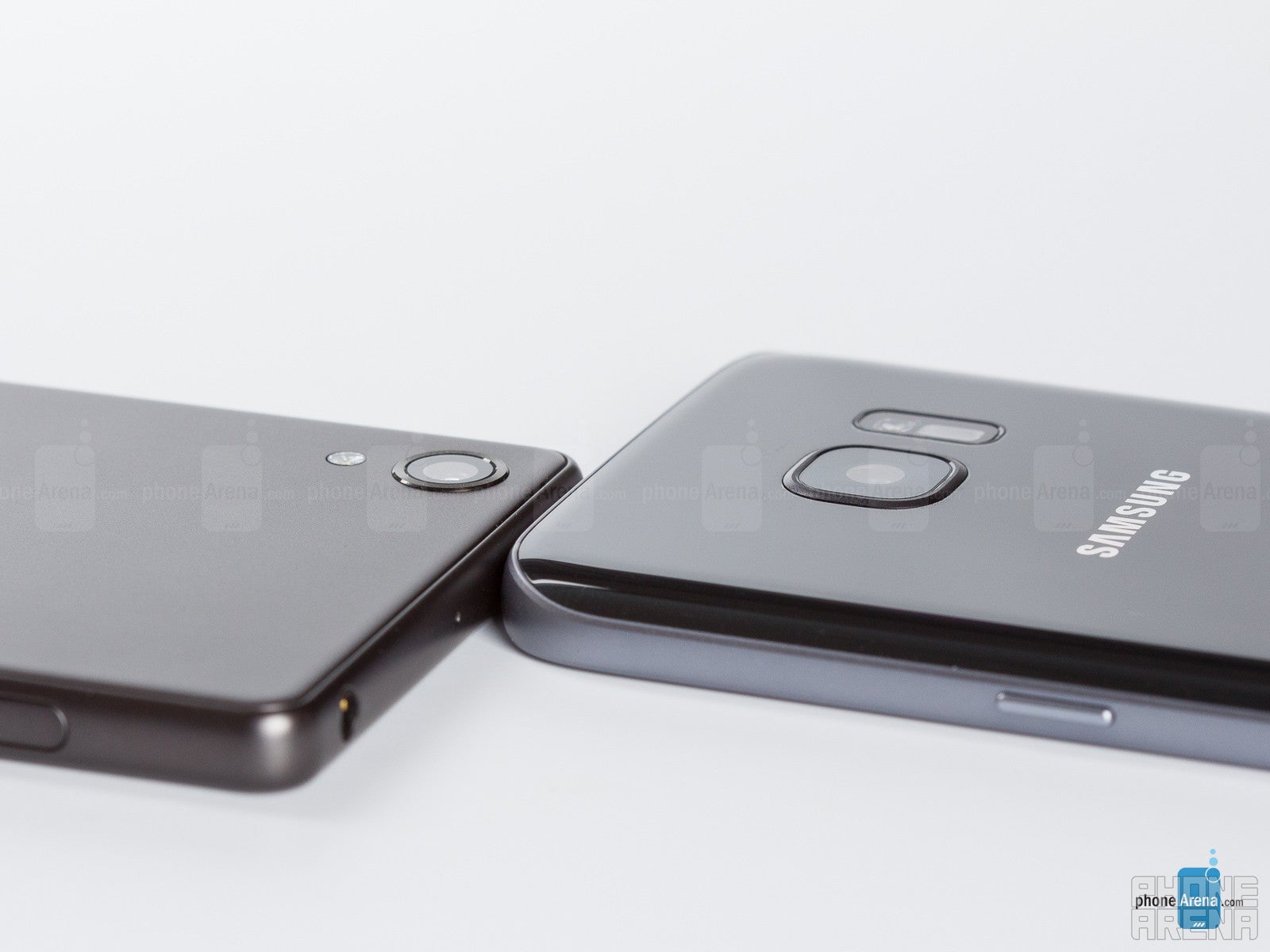
The camera app on the Galaxy S7, on the other hand, feels much better polished: all the necessary options are available at your fingertips. You can easily turn on and off the HDR effect, there is a dedicated button for video recording, and the camera feels wicked fast. Then, there are the cool new Motion Photo, Motion Panorama and Hyperlapse effects, which aren't found on the Xperia X.
What about the image quality, though? The Galaxy S7 - despite the universal praise of its camera - has markedly overblown colors and sharpness boosted quite a bit. This makes its images look a bit too beautified at times, and while it seems that this type of colors appeal to the general user, we are taken aback by those default color settings. Thankfully, there's a soft color mode that produces more realistic images. All else is great on the S7: dynamics, detail and the speed of the camera are truly impressive. And that ultra-fast auto-focus is one of a kind and ensures that practically all our images are perfectly sharp, with none of those typical blurry shots.
The Xperia X, on the other hand, captures much more photo-realistic colors, but suffers from poorer dynamic range, and it tends to lose detail at the edges of the image. Interestingly enough, by default, in the Superior Auto mode, it captures images in 8MP resolution, combining pixels from the original 23MP camera input to produce better quality. You can also shoot in 23MP resolution if you want the maximum possible size.
In terms of video, the lack of 4K video recording on the Xperia X is a sour disappointment, but for all else, the Sony phone does a very good job. It records videos in 1080p resolution at 30 fps or 60 fps, and the recorded footage looks very good: nice colors, good electronic stabilization and relatively fast auto-focus. The Samsung Galaxy S7, however, is a step above and beyond: it has that nice, super sharp 4K video capability, and it features both optical and electronic stabilization for its video recordings. The big highlight of video recording, however, is without a doubt the mind-bogglingly fast auto-focus on the S7: it manages to switch focus with unprecedented speed and ease.
Audio
The Sony Xperia X is equipped with two front-firing speakers, while the Samsung Galaxy S7 has a single, bottom-facing speaker, but this alone does not tell you much about the actual quality of the sound. Sure, it’s nice having stereo speakers, but those on the Xperia X lack loudness and don’t have much depth to their sound. Quite surprisingly, even the not-all-that-stellar speaker of the Galaxy S7 is capable of producing sound with some more oomph and definition in both the lows and the highs. The lack of sufficient loudness is also evident from our speaker test where we measured the S7 scoring 72.7 decibels from a fixed distance, while on the same test, the Xperia X measured a lower 70dB.
Battery life
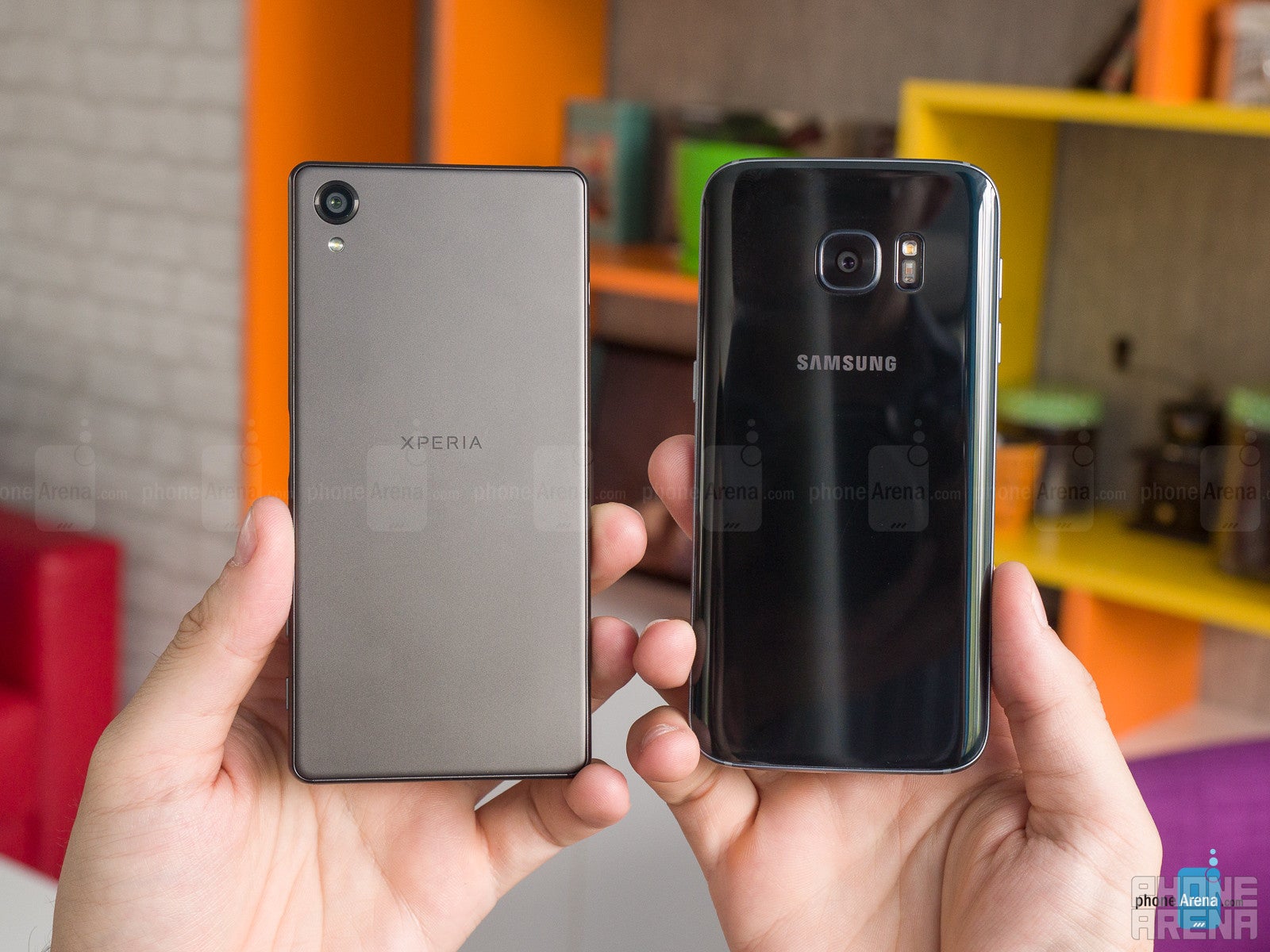
Daily usage so far shows that it is roughly in the same league as the S7, lasting maybe just a bit less in our prolonged usage. Sony claims you can get two-day battery life with the X, but we found this claim far-fetched, at least in our experience.
Then, there is recharge times. Sometimes you just have a few minutes or half an hour to juice up, and in those cases the Galaxy S7 is definitely the better one: it takes less than an hour and a half to fully recharge the S7 from 0% to 100%, while the Xperia X takes an excruciatingly long 2 hours and 20 minutes to juice up, despite having a smaller battery capacity.
Conclusion
At the end of the day, the Sony Xperia X turns out to be a good phone with a beautiful and refined design, while performance is decent in practically every department, but never great. The phone is priced at $550, upper mid-range territory and $150 less than the Galaxy S7, which typically retails for around $700.
The Xperia X feels a bit pricey, especially in this fiercely competitive market. Its display might look good to lay-men, but upon closer inspection, you’d notice that it's a bit bluish and colors are not well-balanced; its Snapdragon 650 is a noticeable step below the Snapdragon 820, which will be noticed for those who edit pictures, browse the web a lot, and play games on their phones. And then, the image quality and camera experience is a bit below expectations. It also lacks catchy new features that the Galaxy S7 has aplenty in the form of Motion Photo, Always-on Display, Game Center, and so on.
In a direct comparison, regardless of price, we’d pick the Galaxy S7 without hesitation: it’s faster, has a mind-bogglingly speedy camera, as well as waterproofing and wireless charging – two very nice extras. While a bit overpriced, the Xperia X will still appeal to lovers of great design and the Sony brand name, but looking at the bigger picture, it underdelivers.

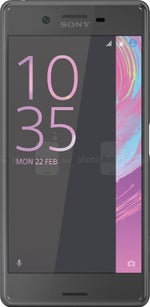


























Things that are NOT allowed: